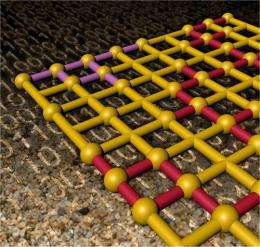Architecture of soil particles greatly influences if, when pollutants migrate

Pollutants can find themselves ensnared underground with few options for escape, according to a study by scientists at Iowa State University, University of Texas at Arlington, and Pacific Northwest National Laboratory. The team found that, while many factors influence contaminant migration, one of the most important are the architecture of the soil grains. The less pore connectivity, the greater the probability that contaminants will take a long time to leave the grain.
Understanding if and when a pollutant moves from an industrial to an agricultural site allows scientists to better predict pollutant migration, test remediation systems, and determine the effectiveness of cleanup projects. While the study was done on uranium, a concern at former nuclear weapons production sites, the research applies to chemicals more commonly associated with machine shops and dry cleaners.
Existing models that predict the rates of desorption and diffusion from the subsurface did not account for real-world grain-scale properties. So, the scientists focused on the desorption, diffusion, and migration of uranium from inside the individual subsurface particles. They conducted numerical calculations and evaluations of diffusion and mass transfer in complex granular porous media, using resources at EMSL.
The results were surprising. The fundamental process of desorption and diffusion from the granular medium to the surrounding liquid phase was much slower than projected by previous models. Also, the team found the rate of desorption dramatically decreased over time. This phenomenon is governed by connectivity, the interconnected architecture of microscopic pores inside individual grains.
Laboratory and field research is under way to characterize grain-scale pore architecture and to investigate the larger-scale manifestation of the grain-scale contaminant diffusion.
More information: Ewing RP, Q Hu, and C Liu. 2010. Scale Dependence of Intragranular Porosity, Tortuosity, and Diffusivity. Water Resources Research 46, W06513. DOI:10.1029/2009WR008183
Provided by Pacific Northwest National Laboratory


















